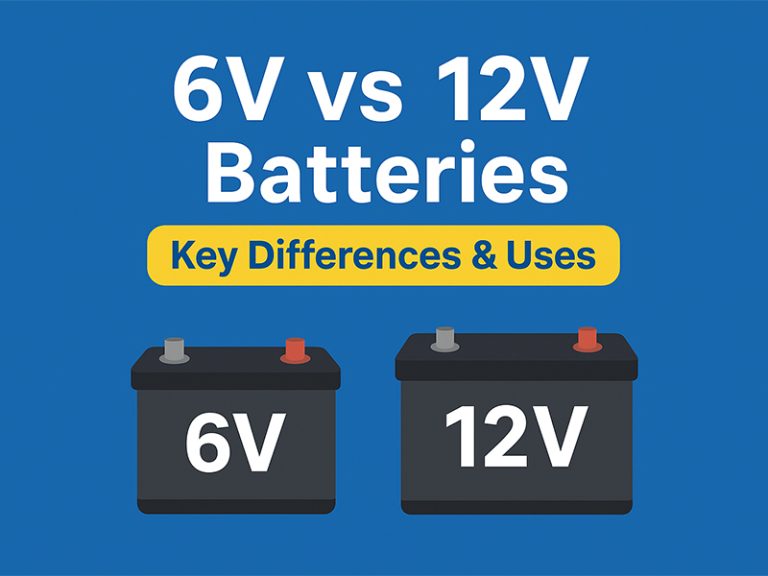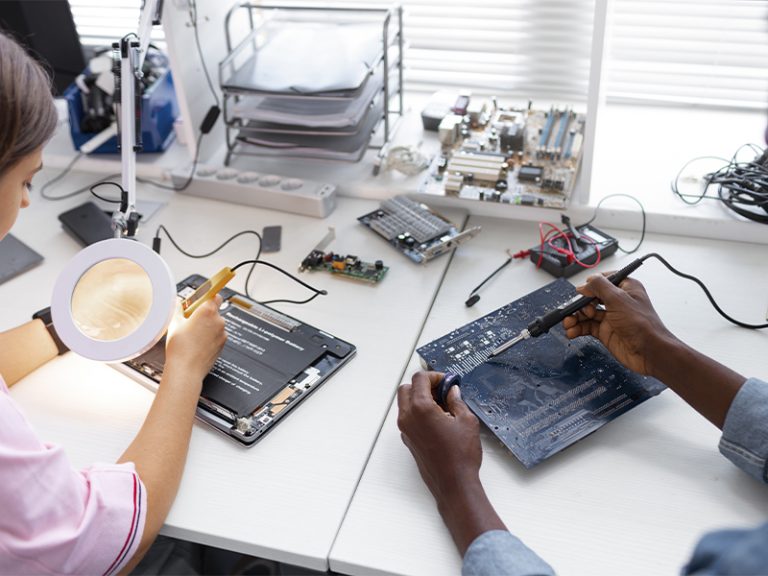Introduction
As sales of electric cars increase you can bet there will be a growing market for safer, better-performing and longer lasting battery systems! For battery researchers, it’s often the case that behind every leap forward in electric vehicle batteries are thousands of tests making sure that the batteries can go hundreds of thousands or millions of miles without losing their ability to hold energy. Next-generation lithium-ion or solid-state battery systems face similarly stringent tests for thermal, electrical, mechanical and chemical requirements before they can be deemed road safe — unlike the old-world lead-acid batteries on which these vehicles once operated.
Further development of battery testing techniques is required for performance evaluation and compliance with safety standards such as long-term reliability predictions. Now that automakers are racing to bring EVs to market more quickly than ever, battery validation has evolved into a science that can keep up.
Overview of EV Battery Types
Introduction Understanding various kind of batteries used in EV is very useful in developing suitable testing methods. Different material chemistries and architectures behave different with mechanical stress, during charging-discharging cycles and in different environmental conditions. There is no universal approach for the durability, toughness, safety and thermal stability of all batteries, as each battery has its unique testing problems.
Lithium-Ion Batteries (Li-ion)
As the most popular variant in EVs today, lithium-ion batteries are the preferred form thanks to their high energy density, moderate self-discharge, and track record. They are very sensitive, to overcharge, overtemp and mechanical abuse and an ideal candidate for thermal/electrical characterization. Inside of this class, there are a few chemistries:
- NMC (Nickel Manganese Cobalt): Can be found in passenger EVs; it offers a middle-of-the-road trade-off between energy, life span and cost.
- LFP (Lithium Iron Phosphate): Good thermal stability and long cycle life but lower energy density.
- NCA (Nickel Cobalt Aluminum): These are found in high-performance EVs and are high in energy but require strong thermal protection.
Every chemistry reacts differently to rapid-charging, high load-operation, and deep discharge, and it therefore needs to be tested under specific conditions.
Solid-State Batteries
Next-gen EV energy storage will be a solid-state battery. These batteries replace the liquid electrolyte with a solid state material, providing advantages in terms of safety, energy density and faster charge time. Yet, they are not yet mature for market and offer specific testing challenges, notably in testing long-term mechanical stability and interfacial resistance.
Other Battery Chemistries (Li-S, NiMH)
Lithium-sulfur (Li-S) and nickel-metal hydride (NiMH) batteries are less used in current EVs, though they show up occasionally in niche applications or hybrids. These battery chemistries require unique testing protocols such as sulfur migration in lithium-sulfide and hydrogen evolution in NiMH cells.
Key Testing Categories
Performance Testing
Performance testing measures how efficiently an EV battery releases energy on the road and when pushed to its limits. It gives critical performance parameters like capacity, power, charge/discharge efficiency and thermal stability—information that is highly beneficial to manufacturers and users.
Capacity and Energy Density
A first part of the performance test is to determine the overall energy the battery can deliver usefully, while it is being used under normal operating conditions. This is usually shown in ampere hours (Ah) or watt hours. There are several factors which affect results such as C-rate (charge/discharge current as a percent of capacity), ambient temperature, and age.
Typical test: Discharge the battery at different C-rate (1C, 2C, etc) for knowing until what voltage of cut-off battery can deliver the energy on full charge.
Power Output and Peak Load Ability
Then, short-term high power capability of the battery (e.g. acceleration events) is analysed. That is so important to motor performance.
Dynamic test: Rapid load changes are applied to the battery to represent acceleration and regenerative braking situations.
Charge/Discharge Rate Efficiency
EV battery testing usually includes fast charge and discharge to estimate round-trip efficiency and heat generation performance. Abnormal heat or voltage fluctuation in such cycles may imply bad cell balancing or internal resistance.
Voltage Stability and Inner Resistance
Under load, the voltage drop is a primary measurement of internal resistance and cell status. Considering the relationship between the voltage and currents at different levels could facilitate the prediction of degradation/aging.
Safety Testing
Safety is the top concern in the design and validation process of EV batteries. A single cell failure can cause a chain reaction of thermal runaway, leading to fire, explosion, or toxic gas formation. Safety testing is meant to replicate the worst thing that could happen and ensure that the battery pack can either contain, separate or mitigate a failure.
Overcharge and Overdischarge Testing
Excessive heat and chemical volatility disrupt overheating a battery above its voltage limitation. Overdischarge of the battery can also cause dendrite growth or cell reversal, causing the battery to become unusable.
Test method: The cells are intentionally overcharged/discharged and monitored to see temperature rising; gas generation; swelling or short circuit.
Thermal Abuse Testing
Extreme temperatures stretch the boundaries of cellular stability and defense.
Hotbox test: Growing heat is applied to battery (e.g., up to 130°C) and signs of catching fire, leaking or venting gas are monitored.
Thermal shock testing: Used to assess the impact of sudden temperature fluctuations that replicate outdoor/seasonal exposure.
Mechanical Abuse Testing
Batteries can be subject to physical shock during crashes, drops or crush events.
Crush test: The cell is crushed by a hydraulic press to determine whether there is internal shorting or thermal runaway.
Nail-in-Puncture test: a steel rod is driven into a fully charged cell to evaluate the reaction to internal damage.
Drop test: Batteries are dropped from specified heights on to steel plates or, in the case of extended duration single cells, on to concrete.
Short Circuit Testing
By simulating, internally or externally, short circuits, you determine whether protective systems (fuses, circuits) will be able to react in time.
External short: The two poles of the battery are connected through the low resistance path, and the current and temperature rise are measured.
Environmental and Stress Testing
Electric vehicle batteries face a variety of air conditions during their operation: from extreme cold, high humidity, vibrations, dust, and changes in altitude. Testing the battery for environmental and mechanical stresses ensures its performance and structural integrity under these conditions.
Temperature and Humidity Cycling
Batteries are put into climate chambers, which are cycled with temperature and humidity over long periods of time. This helps detect:
- Seal failure
- Moisture ingress
- Insulation degradation
- Electrolyte stability changes
Example: A traditional protocol involves cycling the battery between –40°C and +85°C with 95% humidity to simulate extreme seasonal changes.
Altitude and Pressure Testing
Altitude means lower air pressure, which impacts battery cooling and gas management. This is particularly relevant for EVs in mountainous areas or aviation.
Test method: The battery is tested in low-pressure chamber for swelling, venting or escaping electrolyte under low atmospheric pressure.
Vibration and Shock Testing
The road itself, particularly with commercial or off-road EVs, places batteries under constant vibration and mechanical shock.
General Vibration – Random Vibration Testing Real-life use across axes (X, Y, Z), to test structural integrity.
Dropping and impact testing simulates a body being casually– or accidentally–treated.
Applicable standards: SAE J2380, IEC 60068
Lifecycle and Degradation Testing
Lifecycle and degradation testing shows what happens to an EV battery over time not just when it’s new, but after hundreds, or thousands, of charge-discharge cycles. Such a test is necessary to predict battery life, capacity fade, and ultimately product reliability, which correlates with warranty terms and customer satisfaction.
Cycle Life Testing
It’s the very base-level longer-term assessment. Computer batteries are charged and discharged under certain conditions (e.g., 25°C, 1C rate) to test capacity retention from hundreds to thousands of cycles.
Key metrics
–% of remaining capacity after X cycles
– Internal resistance growth
– Coulombic efficiency
The current standard for EVs is about 1,000–2,000 cycles to 80% capacity.
Calendar Aging
Batteries continue to degrade during idle times because of their chemical instability and parasitic reactions.
Test method: Cells are cycled at various temperatures and states of charge (SOC) over a long duration (e.g., 3, 6, 12 months), followed by capacity-loss testing.
Insight: In many cases, warm temperature and high state of charge time-based aging may possibly occur even without cycling.
Dynamic Stress Testing
Some of the more sophisticated labs mimic real-world driving habits changes in C-rates, regenerative braking, driving in stop-and-go traffic to test the battery under conditions similar to those it would experience on the road.
This aids in predicting degradation behavior between urban and highway usage under representative thermal and electrical conditions.
Compliance Testing (UN38. 3, IEC 62660, etc.)
In addition to performance and safety – discussed below – EV batteries must meet a variety of regulatory and transportation standards before they are able to be sold, shipped, or installed. The certification testing helps to confirm that the battery system complies with local and international safety, transportation and environmental standards.
UN38. 3 – Transport Safety Certification
Mandatory for shipping lithium batteries by air, sea or land, UN38. 3:1 is a standard which has been adopted globally by the United Nations.
Key tests include:
- Altitude simulation (low pressure exposure)
- Thermal test (extreme temperature cycling)
- Vibration and shock
- External short circuit
- Overcharge and forced discharge
Passing UN38. 3 is a requirement for shipping a lithium battery commercially.
IEC 62660 Series – EV Battery Testing Standards
The new standard for EV battery testing IEC’s 62660 from the “Subcommittee 21” – UL 2267 – defines the tests and the requirements for packs and systems used on EVs.
This part of the series specifies test methods for lithium-ion traction battery packs and systems in electric road vehicles.
IEC 62660-1: Performance testing
IEC 62660-2: D first edition: Reliability and abuse testing
IEC 62660-3: Electrical safety and voltage withstand during fault condition
These criteria are commonly used by both OEMs and third-party labs to qualify EV battery modules.
UL Standards, such as: UL 2580, UL 1973
These are mainly used in North America and focus on fire resistance, electrical isolation, and protection circuitry.
UL 2580: For EV battery packs
UL 1973: For fixed and limited moving applications
ISO and SAE Standards
ISO 12405-1: Electrical Vehicle Li-Ion packs — Performance and Safety Requirements1
SAE J2464: Abuse testing for automotive cells and batteries
Advanced Methods in Practice
Electric vehicle technology is constantly advancing, and so are the methods used to develop and test the accompanying battery systems. The conventional charge/discharge and abuse tests are not longer able to meet the new restraints. State-of-the-Art battery testing uses advanced equipment, intelligent data analysis and real time simulations in order to increase accuracy, lower the time of validation and secure safety in large scales.
High-Speed Charge/Discharge Simulation
Rapid charging (DC fast charging) and regenerative braking are commonly observed in real-world driving. Sophisticated test benches are used to simulate these high-speed energy flows to measure.
- Current balancing across cells
- Thermal effects during fast charging
- The response of the controller and SOC management
This tool enables to detect BMS logic bottlenecks and cell balancing under aggressive charging.
Thermal Runaway Propagation Testing
Instead of simply triggering a single-cell failure, advanced labs now routinely investigate how failure jumps from one cell to another. This is crucial for the safety validation of packs.
- Instruments consist of infrared cameras, thermocouple arrays,and flame/vapor sensors.
- Tests are frequently conducted in confined chambersto investigate gas release, flame spread and pressure wave generation.
Prediction of Health tests with AI and Machine Learning
However, some lab already use machine learning to predict States of Health (SOH) and Remaining Useful Life (RUL) to replace the cycle counting.
- Given historical test data (voltage, temperature, current), the models learn to classify future performance degradation.
- Aids in maximizing battery servicing and replacement schedules in EV fleets.
Embedded Sensors and Live Monitoring
Contemporary EV packs contain several sensors that are used for:
- Cell-level voltage and temperature
- Current flow
- Pressure and gas detection
This sensor offers immediate feedback in both lab and vehicle environments enabling quicker and more accurate diagnostics, as well as the ability to make repeated tests.
Laboratory Equipment and Standards
Battery testing for automotive purposes, especially for electric vehicles, needs sophisticated laboratory infrastructure to fulfill requirements towards accuracy, repeatability and safety. The quality of the equipment employed — and the extent to which accepted international standards are followed — are crucial in ensuring the reliability of test results as well as compliance with regulatory provisions.
Battery Cyclers
Battery cyclers form the backbone of every battery testing lab, regulating exact charge and discharge patterns in programmable ways.
- Current regulation with extremely high precision to control current, voltage and temperature.
- Multiple channels support to test multiple cells/modules at the same time
- Application to performance, life cycle and degradation testing
Examples: systems from Arbin, MACCOR, Chroma, and Bitrode
Environmental Chambers
So that labs can simulate temperature and humidity conditions found in the real world, they use programmable environmental chambers.
- Temperature range:–70°C to +180°C
- Humidity control:10%–98% RH
- Incorporated security measures for thermal runaway suppression
- Frequently used in conjunction with vibration tables for combined environment testing
Standards referenced: IEC 60068, UN38. 3, ISO 12405
DAQ and Monitoring systems
Real-time voltage, current, resistance, and temperature data is collected from single cells and battery modules using high-speed DAQ systems.
- Multiple thermocouple and voltage probes support
- Real time monitoring function and can be triggered automatically alarm.
- Critical to AI/ML training on Predictive Maintenance systems
Safety Cabinets and Fire Suppression Systems
Because of the potential of such a system to cause thermal runaway and fire, a battery test lab comes complete with:
- Fire-rated battery enclosures
- Gas venting and suppression (i.e., CO₂ or clean agent systems)
Features: Emergency shut-off; With remote control
Standards Compliance Tools
Traceability and calibration records To assist labs in fulfilling the former, the lab will frequently keep traceability and (or) calibration records, sometimes in compliance with ISO/IEC 17025, because they want to be able to demonstrate:
- Test reproducibility
- Regulatory compliance (e.g., UL, TUV, SGS) audit-readiness
- Documentation for compliance testing (e.g. UN38. 3, UL 2580)
Challenges and Future Trends
With the advancement of EV battery technology, the testing and validation of such leads become increasingly challenging. New chemistries, more rapid charging requirements and on-board vehicle systems have meant that today there is a need for more advanced test strategies. Battery testing is no longer just a task of proving capacity — it’s about predicting the future and taking a failure that hasn’t happened yet and preventing it.
Developing Solid-State and Next-Gen Batteries Testers
Solid-state batteries are denser and safer, but introduce new challenges:
- Interface instability:Solid electrolytes are susceptible to micro-cracks and dendrite growth, which are difficult to identify by conventional means.
- Mechanical sensitivity:It was necessary to apply particular pressure to perform tests in very small layer systems.
- Expensive manufacturing:preclude a massive destructive test during development.
Scalability and Automation
As more EV models begin coming to market, manufacturers will need to expand their testing capacity, without scaling back on quality.
- Automated test benchescan reduce hands-on work and improve throughput.
- Cloud-based test data storage allows people around the world to work together and review data from one location.
- Digital twins of battery systems are increasingly employed for behavior prediction prior to experimentation.
AI-Driven Diagnostics and Predictive Maintenance
AI and machine learning are no longer just tools for lab research — they’re being implemented directly in production environments.
- Predictive algorithmscan recognize early failure warnings.
- BMS-integrated diagnosticsmonitor State of Health (SOH) online.
- This will enable Maintenance as a Service,minimizing cost and downtime of Operation in EV fleets.
Regulatory Catch-Up
The testing protocols and standards have tended to lag behind rapidly moving innovation. For example:
- New battery formats (e.g., structural packs, cylindrical-to-prismatic hybrids) may not conform to established test protocols.
- Local laws may also differ, necessitating additional testing for international certification.
For manufacturers, it’s an ongoing process that requires agility, modifying test plans as standards change, whenever they change.
Conclusion
As electric cars change the driving world, one king of the road has yet to be toppled: good old king Battery. But a high-performance battery is not sufficient — it must be tested, validated, and have trust developed in it under a large number of operating and abuse conditions. With better performance and safety, extended life/system lifetime, and regulatory compliance at stake, advanced battery testing standards verify that EV batteries are reliable, efficient, and safe.
Transition to solid-state chemistries, AI-driven diagnostics, and automated test/automation environment is redefining the limits of what battery testing could do. If manufacturers and testing labs are able to get ahead of these trends, the time it will take to enter the market can be drastically reduced, and the chance for consumer confidence to emerge within the EV revolution is increased.
At the end of the day, battery testing has become less of a developmental step and more of a cornerstone of product integrity, risk management and innovation. Sensible, predictive and scalable testing for electric mobility will be the next generation priority for those companies who want to invest smarter.


